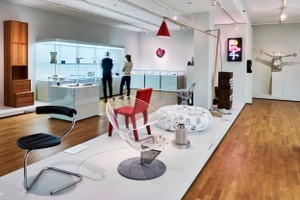ZUKÜNFTE. Material und Design von morgen
In the organizer's words:
Humanity has always been fascinated by ideas, visions and scenarios for the future. In view of the current global challenges, topics such as resource scarcity, the climate crisis and social and economic injustice dominate society's perception. Designers and artists are therefore increasingly focusing on aspects of possible "futures". The plural reflects the options, scenarios and also a certain uncertainty with which we look to the future.
Design has long ceased to see itself solely as a discipline of aesthetics and functionality. It looks for possibilities, explores systems and processes and is often open-ended. Today and in the future, it is at the interface of the most diverse disciplines, from the natural sciences and humanities to computer science. Design serves as a source of inspiration and plays a networking role between research, industry and society. In view of the long overdue steps towards more sustainable industrial production, the innovative design disciplines explore and question the present.
150 years after the museum was founded, we want to look at the future role of design in society. In three chapters, the exhibition is dedicated to themes of the distant and near future.
The questions of future, partly post-human and interspecies perspectives are explored in the first part of the exhibition, What, If... is explored in the first part of the exhibition. The focus here is on speculative design approaches, a research-oriented, experimental design approach that critically examines current social issues.
The second thematic complex, Ready-Made Future, shows materials and products that are the results of an already existing circular economy, but are not yet sufficiently used by industry or are not yet sufficiently present in public perception. They focus on alternatives that can already be implemented.
In the third chapter, Material Lab, four universities and a Dutch design studio - which operate at the interface of biology, design, art and industry - show the processes behind their current research.
This content has been machine translated.












